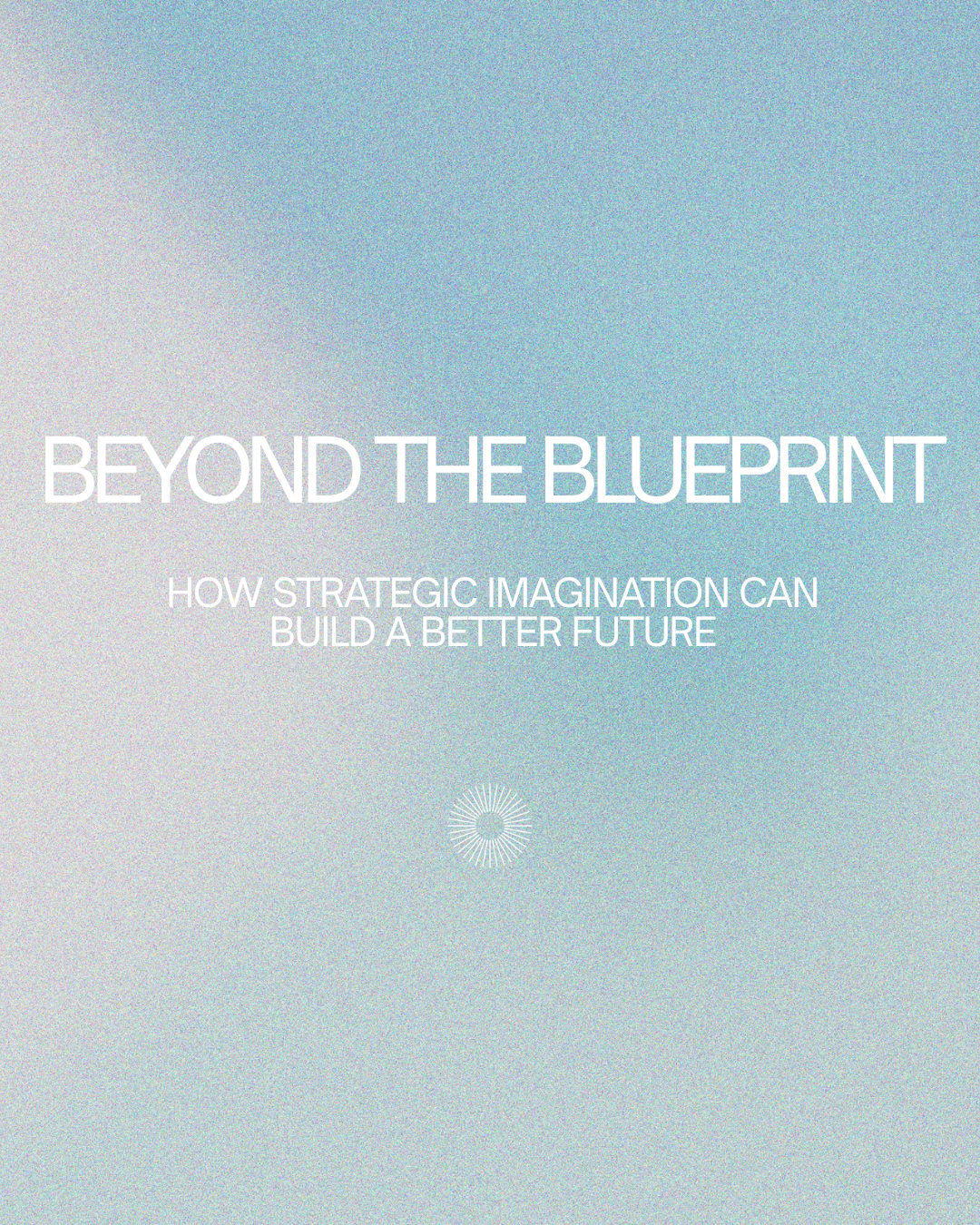Beyond the Blueprint: How Strategic Imagination Can Build a Better Future
In a world of constant change and increasing complexity, the future isn't just something that happens to us—it's something we must architect. The choices and solutions we craft today profoundly shape tomorrow. This consciousness, captured by our tagline "Mapping a Future of Care," is deeply inspired by a vital reminder that guides Future Mapping's philosophy: "Don't forget to envision a world that values humanity."
This isn't just a powerful guiding phrase; it's a call to action, demanding a potent force: imagination. While imagination is widely valued in innovation, its full strategic potential is often understated. Imagination is more than abstract dreaming; it's the fuel that allows leaders to see beyond the present, innovate with purpose, and drive impactful change that transcends conventional approaches. Imagination illuminates pathways to architect possibilities.
Here are three ways leaders can wield imagination as a strategic weapon for good:
1. Imagination Helps Cut Through Disruption
When the ground shifts beneath your feet, conventional wisdom often serves to sustain and protect. Overwhelming emotions, uncertainty, or misreading the present moment can paralyze even the most experienced leaders. In times of social, political, and economic upheaval, imagination—anchored by a deep and unwavering commitment to human flourishing—fuels deeper insights and guides decisive action.
Imagination empowers us to envision multiple pathways and creatively adapt. This ability to remain flexible, adaptable, and practical helps organizations stay focused on immediate challenges while building a future grounded in what truly matters: consideration for people. For us, imagination isn't escapism; it's a disciplined way to envision and then build a path forward, bolstering hope in the possibility of achievement.
For instance, when a vital public-private partnership faced disconnected efforts among numerous nonprofits and civic institutions, and the need for truly inclusive economic growth, our founder didn't just identify stakeholders. She imagined a more cohesive ecosystem. She facilitated cross-organizational dialogues and developed an inclusivity assessment system, bolstering projects that benefit many residents across all socioeconomic levels and neighborhoods. This imaginative approach to systemic change increased engagement and highlighted opportunities for more robust citywide partnerships.
2. Imagination Reveals Gold Where Others See Gravel
Innovation doesn't always mean inventing something entirely new. Sometimes, the biggest breakthroughs come from applying existing resources in ways no one else considered. These opportunities can be missed because leaders look in the wrong places or with the wrong lens.
The power lies in imaginative reframing that transforms challenges into opportunities, backed by analysis that validates what others can't see. When you combine deep historical knowledge with rich contextual understanding, imagination reveals pathways that were hiding in plain sight.
Consider our work with global real estate investors. We identified an opportunity to challenge common assumptions about residents in historically marginalized neighborhoods—assumptions that often led investors to dismiss viable projects automatically.
We didn't just present data; we painted a comprehensive picture. By providing accurate psychographics, we revealed the true values, interests, and lifestyles of residents, highlighting significant untapped investment potential. What initially appeared as limitations transformed into clear opportunities when viewed through the right imaginative lens.
This approach isn't about political correctness; it's about uncovering overlooked value through integrity and strategic intelligence. By expanding their perspective with historical context and precise insights, we revealed significant untapped investment potential. This work illuminated how their pursuit of growth objectives could align with opportunities for more equitable economic development
3. Imagination Can Architect Mutually Beneficial Solutions
At Future Mapping, we define "love" as a strategic commitment to solutions that improve the human condition while driving organizational success. Most leaders think these are competing priorities. Imagination reveals they're actually amplifying forces when approached correctly.
This shows up powerfully in our arts & entertainment work, where the tension between artistic expression and business stability typically creates impossible choices. Through high emotional intelligence, business acumen, and diverse perspectives, we don't broker compromises. Instead, we architect solutions where both sides don't just survive, they thrive.
When a visionary artist and investors wanted to scale a successful pop-up exhibit, most approaches would have forced trade-offs between philanthropic aspirations and growth objectives. Instead, we used imagination to find where these goals could strengthen each other.
By truly understanding and respecting both perspectives, we fostered trust that enabled integrated strategies. The result? A project that moved forward with a clear roadmap for expansion—not despite the tension between art and commerce, but because we found where they could amplify each other's impact.
The Strategic Imperative: Imagination Isn't Optional Anymore
Imagination stands as an essential strategic asset for navigating complexity and building a future that matters — one that truly values humanity. It is the force that fuels insight and guides action in disruption, reveals opportunities hidden in plain sight, validates potential, and enables the architecting of a more loving future.
This vision drives everything we do at Future Mapping, from business strategy to operations strategy to product & service innovation. When leaders embrace imagination as a strategic tool rather than a creative luxury, they unlock potentials that conventional thinking simply cannot reach.
In a world demanding both extraordinary results from businesses, governments, and nonprofits and genuine humanity, imagination becomes the bridge between what is and what could be. Because when you can see possibilities others miss, you don't just adapt to the future—you architect it.
Ready to map your organization’s future? Contact us.

